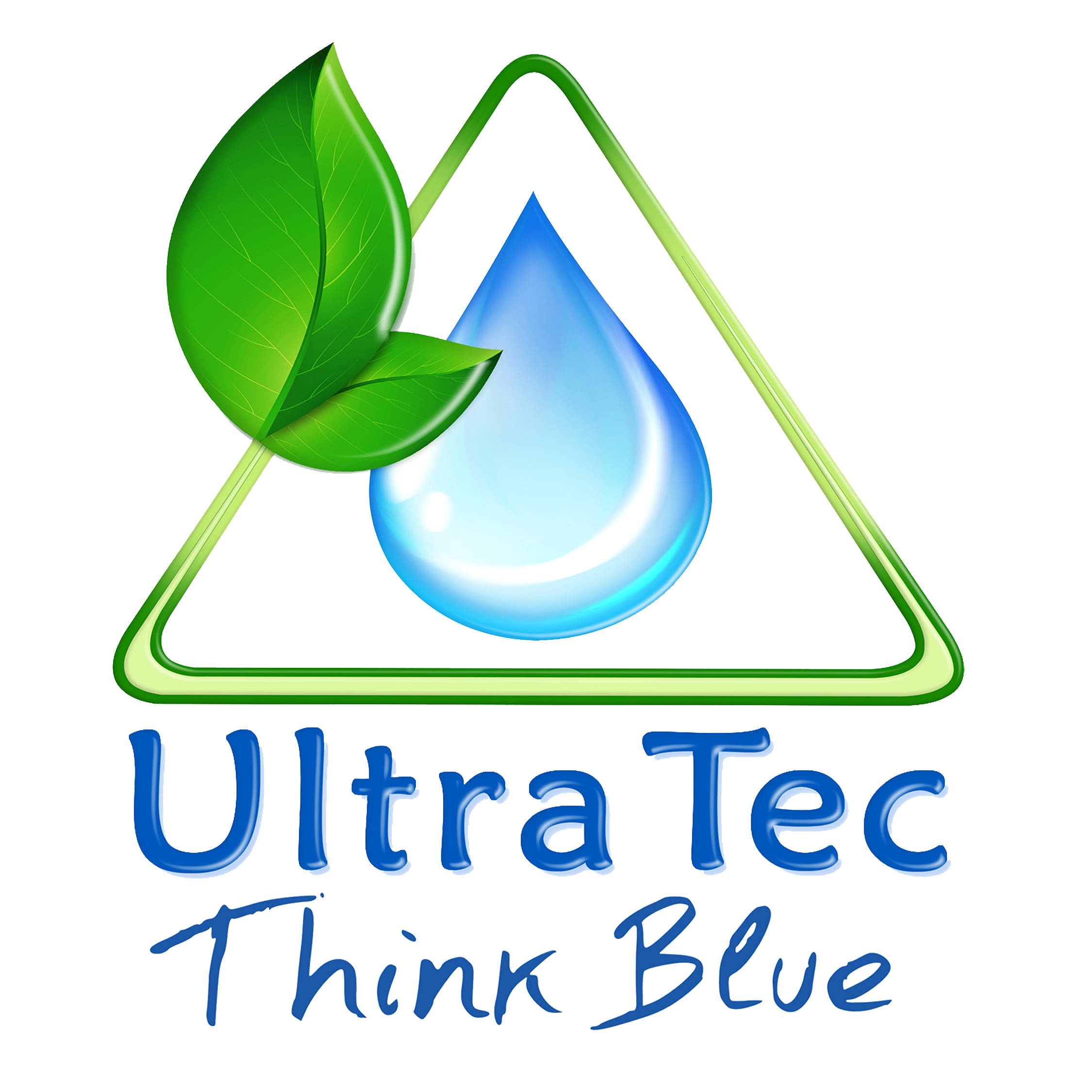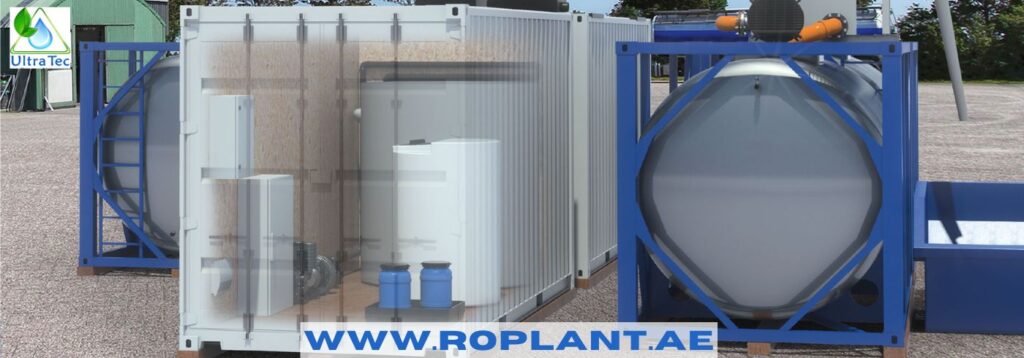Introduction
In the present era, efficient wastewater management holds immense significance in safeguarding the environment and promoting the health and well-being of communities. One innovative solution that has gained significant popularity is the containerized RO Plant water treatment company UAE sewage treatment plant. This article explores the concept, benefits, working principle, and applications of containerized sewage treatment plants, highlighting their importance in sustainable development.
What is a Containerized Sewage Treatment Plant?
A containerized sewage treatment plant, housed within a standard shipping container, functions as a self-contained wastewater treatment system. Its purpose is to treat sewage and wastewater generated by small to medium-sized communities, remote locations, construction sites, military camps, disaster-stricken areas, and temporary facilities. This solution, characterized by its modular and compact design, offers flexibility and easy deployment. Therefore, it becomes an ideal choice in situations where traditional sewage infrastructure is limited or unavailable.
Benefits of Containerized Sewage Treatment Plant
Containerized sewage treatment plants by UltraTec offer several benefits, including:
- Flexibility and Mobility: The modular design allows easy transportation and installation, making them suitable for permanent and temporary applications.
- Rapid Deployment: These plants enable quick setup and operational readiness, offering immediate relief during emergencies or temporary requirements.
- Space Efficiency: By utilizing compact containers, these treatment plants save valuable land space, making them ideal for urban areas with limited land availability.
- Cost-Effective: Containerized plants offer a cost-effective alternative to conventional sewage treatment infrastructure, reducing initial capital investments and long-term operational costs.
- Scalability: These systems can be easily scaled up or down to accommodate varying population sizes and sewage loads.
- Easy Maintenance: Containerized plants are designed for ease of maintenance, with integrated monitoring and control systems for efficient operation.
- Modular Expansion: Additional containers can be added to increase the treatment capacity as the population grows or demand increases.
Working Principle of Containerized Sewage Treatment Plant
Containerized sewage treatment plants follow a multi-stage treatment process to ensure efficient removal of contaminants. The typical treatment stages include:
- Preliminary Treatment: In this stage, large solids, debris, and grit are removed from the wastewater through screening and sedimentation processes.
- Primary Treatment: The wastewater undergoes primary sedimentation, where suspended solids settle down and are released as sludge.
- Biological Treatment: The wastewater undergoes a natural treatment process, where microorganisms naturally degrade the organic matter, transforming it into safe and non-hazardous byproducts.
- Secondary Treatment: Further treatment processes, such as activated sludge, sequencing batch reactors (SBR), or membrane bioreactors (MBR), is employed to achieve higher removal rates of organic pollutants and nutrients.
- Tertiary Treatment: For specific applications, additional treatment steps like disinfection, filtration, and nutrient removal may be included to meet stringent water quality standards.
- Effluent Discharge: The treated wastewater, now meeting regulatory standards, can be safely discharged into the environment or reused for various purposes, such as irrigation or industrial processes.
Components of a Containerized Sewage Treatment Plant
A containerized sewage treatment plant typically comprises the following components:
- Inlet Chamber: Receives the raw sewage and allows preliminary screening and removal of large solids.
- Primary Settling Tank: Facilitates the settling of suspended solids and sludge separation.
- Aeration System: Provides oxygen to support the growth of beneficial microorganisms during the biological treatment process.
- Secondary Settling Tank: Allows the settling of activated sludge and separation of treated water.
- Filtration/Membrane System: Removes fine suspended solids and pathogens, if necessary.
- Disinfection System: Ensures the elimination of harmful bacteria and viruses from the treated wastewater, ensuring its safety for discharge or reuse.
- Sludge Treatment System: Treats the sludge generated during treatment for proper disposal or beneficial use.
Installation and Operation of Containerized Sewage Treatment Plants
Containerized sewage treatment plants are designed for easy installation and operation. The process involves the following steps:
- Site Preparation: A suitable location is identified, considering accessibility, proximity to the sewage source, and discharge requirements.
- Foundation Preparation: A leveled and stable foundation is prepared to support the weight of the container and ensure its stability during operation.
- Container Placement: We secure the container on the foundation, enabling convenient access to the various components.
- Connections and Integration: We make the necessary plumbing, electrical, and control connections to integrate the treatment plant with the sewage source and power supply.
- Start-up and Commissioning: The plant is started, and the operation is fine-tuned to achieve optimal performance. Proper training is provided to the operators for effective management.
- Monitoring and Maintenance: To ensure smooth operation and maximize the plant’s longevity, the operators regularly monitor, inspect, and perform maintenance activities.
Applications of Containerized Sewage Treatment Plants
Containerized sewage treatment plants find diverse applications in various settings, including:
- Remote and Off-Grid Locations: They provide essential wastewater treatment capabilities in remote areas lacking access to centralized sewage infrastructure.
- Construction and Mining Sites: These plants cater to the temporary sewage treatment needs of construction sites, mining camps, and other similar projects.
- Military and Defense: Containerized plants serve the wastewater treatment requirements of military bases, disaster relief operations, and peacekeeping missions.
- Resorts and Recreational Facilities: They offer sustainable wastewater management solutions for resorts, camping grounds, and outdoor recreational facilities.
- Events and Festivals: Temporary sewage treatment plants ensure proper sanitation during large-scale events, festivals, and gatherings.
Environmental Impact and Sustainability
Containerized sewage treatment plants are vital in environmental conservation and sustainable development. They help in:
- Water Conservation: These plants reduce the strain on freshwater resources by treating and reusing wastewater.
- Protection of Water Bodies: Proper treatment ensures that discharged effluents do not pollute rivers, lakes, or groundwater sources.
- Reduced Carbon Footprint: Containerized plants often incorporate energy-efficient technologies and utilize renewable energy sources to minimize greenhouse gas emissions.
- Sustainable Infrastructure: These plants’ modular and scalable nature promotes resource efficiency and avoids unnecessary construction of large-scale sewage networks.
Advancements in Containerized Sewage Treatment Technology
Ongoing research and technological advancements continue to enhance containerized sewage treatment plants. Some notable developments include:
- Intelligent Monitoring and Control Systems: Integration of advanced sensors, automation, and data analytics for real-time monitoring and optimization of plant performance.
- Energy Recovery and Resource Reclamation: Implementation of technologies to recover energy from wastewater and extract valuable resources, such as nutrients and biogas.
- Decentralized Treatment Networks: Integrating multiple containerized plants in a decentralized network allows for distributed sewage treatment and resilience against system failures.
Challenges and Limitations
Despite their numerous benefits, containerized sewage treatment plants face specific challenges and limitations, such as:
- Space Limitations: The compact design of containerized plants may restrict the treatment capacity, limiting their suitability for larger populations.
- Maintenance Requirements: Regular maintenance and servicing are essential to ensure proper functioning, and a lack of adequate upkeep can affect performance.
- Regulatory Compliance: Meeting stringent water quality standards and obtaining necessary permits can pose challenges in some regions.
- Waste Disposal: Proper disposal or reuse of the generated sludge requires adherence to specific guidelines and regulations.
Cost Considerations
Containerized sewage treatment plants offer cost advantages compared to traditional infrastructure, but costs can vary based on factors like capacity, treatment processes, and additional requirements. Some cost considerations include:
- Capital Investment: The initial purchase and installation costs of the containerized plant, including civil works, electrical connections, and site preparation.
- Operating Costs: Ongoing expenses for energy consumption, maintenance, sludge management, and compliance with regulations.
- Lifecycle Costs: Considering the plant’s lifespan, including potential upgrades, replacements, and disposal costs.
Future Outlook
The demand for containerized sewage treatment plants will grow in the coming years. Advancements in technology, increased focus on sustainable development, and the need for flexible wastewater management solutions will drive further innovation in this field. Containerized plants anticipate a continuous evolution, as they offer enhanced treatment efficiency, resource recovery, and integration with smart city infrastructure.
Conclusion
Containerized sewage treatment plants provide an efficient, flexible, and sustainable solution for wastewater treatment in various settings. Their mobility, scalability, and ease of installation make them invaluable when traditional sewage infrastructure is not feasible or practical. By adopting containerized plants, communities can achieve effective wastewater management, protect the environment, and contribute to sustainable development.

